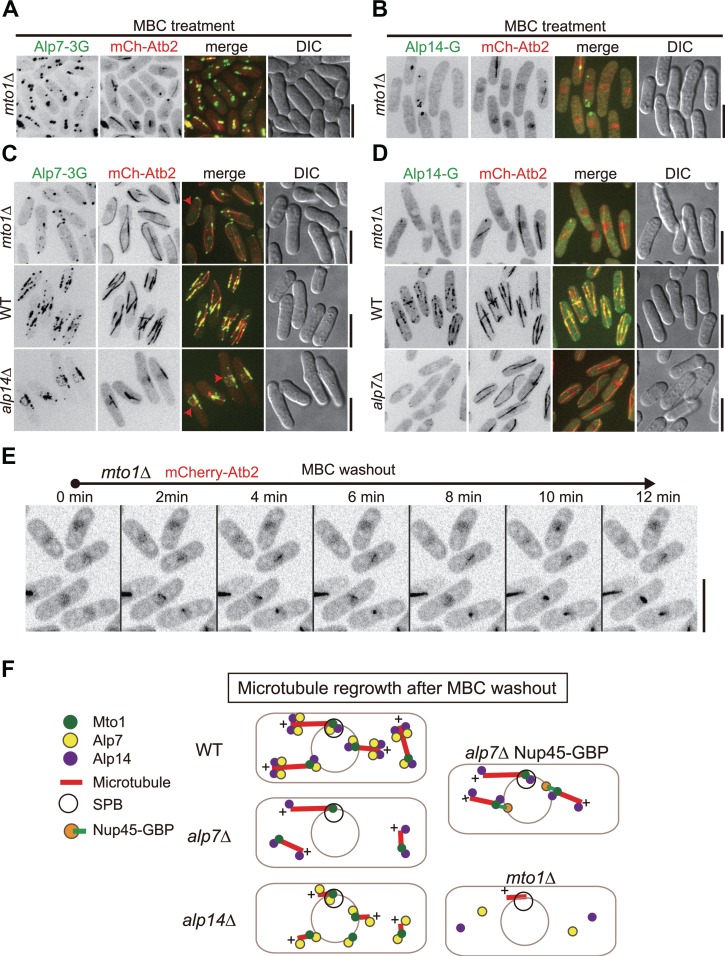Figure 6.

Localization of Alp7 and Alp14 to the NE after MBC treatment is abolished in mto1Δ cells. (A and B) Maximum projection images of mto1Δ cells expressing mCherry-Atb2 and either Alp7-3GFP (A) or Alp14-GFP (B). Cells were treated with 200 μg/ml MBC for 10 min to depolymerize microtubules. Scale bar, 10 μm. (C and D) Maximum projection images of unperturbed mto1Δ, WT, and either alp14Δ (C) or alp7Δ (D) cells expressing mCherry-Atb2 and either Alp7-3GFP (C) or Alp14-GFP (D). Scale bar, 10 μm. (E) Maximum projection time-lapse images of mto1Δ cells expressing mCherry-Atb2. Scale bar, 10 μm. (F) Diagram illustrating the proteins regulating microtubule regrowth after MBC washout. In WT cells, Alp7, Alp14, and Mto1 are present, presumably as a complex, on the NE to promote initial microtubule growth; the presence of the Alp7-Alp14 at microtubule plus ends further promotes efficient microtubule elongation. Such Alp7, Alp14, and Mto1 complex also function to promote microtubule regrowth in the cytoplasm. The absence of Alp7 (alp7Δ) impairs the localization of Mto1 and Alp14 to the NE, compromising microtubule growth from the NE but not in the cytoplasm. The absence of Alp14 (alp14Δ) affects, but does not abolish, the localization of Alp7 and Mto1 to the NE. As a result, microtubules are still able to regrow from the NE after MBC washout but display a defect in microtubule elongation due to the lacking of the microtubule polymerase Alp14. The absence of Mto1 (mto1Δ) abolishes the localization of both Alp7 and Alp14 to the NE, leading to no microtubule regrowth from the NE after MBC washout.
